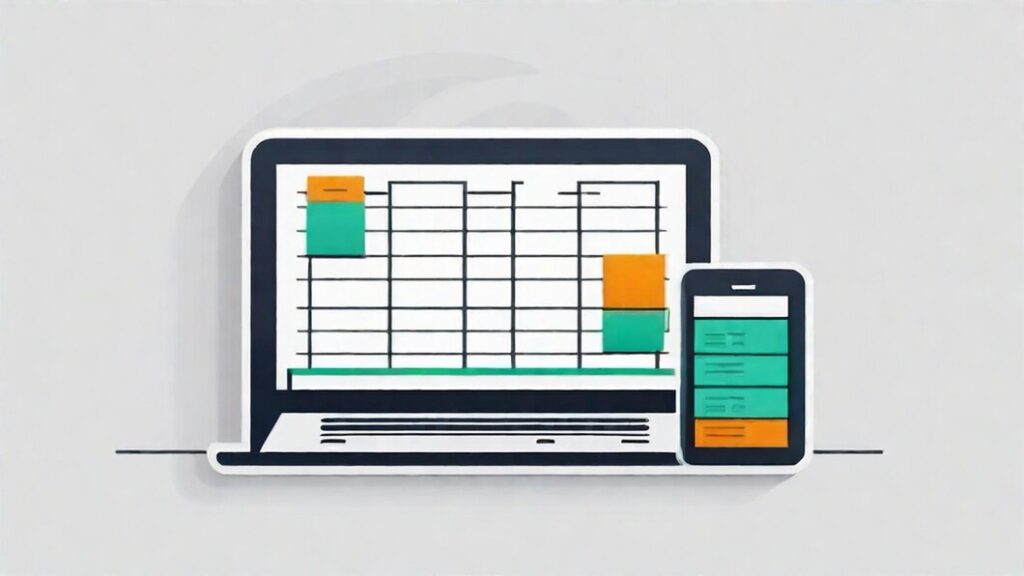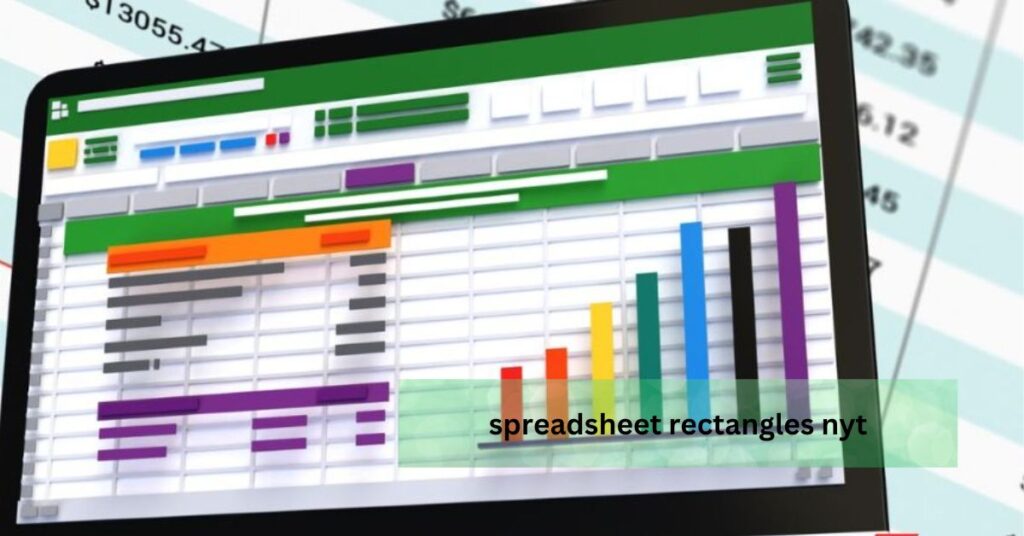Spreadsheet rectangles, formed by the grids of rows and columns within spreadsheet software, have become essential to data management and analysis in various industries. They represent a powerful way to organize, manipulate, and analyze data.
This article delves deep into spreadsheet rectangles, exploring their structure, applications, and importance in modern data management practices.
What Are Spreadsheet Rectangles?
Definition and Basic Structure
Spreadsheet rectangles refer to the contiguous data blocks within a spreadsheet that are organized into rows and columns. Each rectangle represents a cell cluster that often shares similar data types, formats, or formulas.
These rectangles form the foundation of data organization within spreadsheet software like Microsoft Excel, Google Sheets, and Apple Numbers.
Functionality and Utility
The functionality of spreadsheet rectangles lies in their ability to group related data, making it easier to apply formulas and functions uniformly.
Users can perform calculations, apply conditional formatting, and analyze trends across large datasets with minimal effort by segmenting data into rectangles. This structured approach enhances efficiency and reduces the risk of errors in data manipulation.
Examples of Common Uses
Spreadsheet rectangles are used in various tasks, ranging from simple data entry to complex financial modelling. For example, a rectangle might represent a company’s monthly sales data, where each row contains data for a different product, and each column represents a different month.
By organizing data in this way, businesses can quickly analyze performance trends and make informed decisions.
Applications Across Different Industries

Finance
- Budgeting and Forecasting: In the finance industry, spreadsheet rectangles are crucial for budgeting and forecasting. Financial analysts use rectangles to organize data related to revenues, expenses, and projections. By structuring financial data into rectangles, analysts can easily apply formulas to calculate totals, averages, and variances, providing a clear picture of a company’s financial health.
- Financial Analysis: Spreadsheet rectangles enable detailed financial analysis by allowing analysts to segment data based on various criteria, such as periods or departments. This segmentation facilitates the comparison of financial performance across different areas of a business, aiding in identifying strengths and weaknesses.
Business Analytics
- Sales Tracking: Businesses rely on spreadsheet rectangles to track sales data. Organizing sales figures into rectangles allows companies to analyze performance by product, region, or sales representative. This structured approach enables businesses to identify trends, forecast future sales, and develop strategies to enhance revenue.
- Inventory Management: Spreadsheet rectangles are also used in inventory management. By structuring inventory data into rectangles, businesses can monitor stock levels, track orders, and manage supply chains more effectively. The ability to apply formulas across entire rectangles allows for quick calculations of inventory turnover rates and reorder points.
Education and Research
- Data Entry and Statistical Analysis: In educational and research settings, spreadsheet rectangles are essential for data entry and statistical analysis. Researchers use rectangles to record experimental data, organize survey responses, and perform statistical tests. The structured format of rectangles simplifies analyzing data and drawing meaningful conclusions.
- Leaching and Interactive Learning: Educators use spreadsheet rectangles to teach mathematical concepts, manage grades, and create interactive learning exercises. By organizing student data into rectangles, teachers can easily apply formulas to calculate grades, track progress, and identify areas where students need additional support.
Read: Appfordown Android – Comprehensive Guide For Optimizing
The Role of Spreadsheet Rectangles in Data Analysis
Segmenting Data for Comparative Analysis
One key role of spreadsheet rectangles in data analysis is their ability to segment data based on specific criteria.
For example, a marketing team might use rectangles to organize data by geographic region to compare campaign performance across different areas. This segmentation facilitates the identification of trends and patterns, enabling more informed decision-making.
Applying Formulas and Functions
Spreadsheet rectangles are particularly useful for applying formulas and functions across large datasets. Users can apply calculations such as sums, averages, and conditional logic across entire datasets with minimal effort by grouping related data into rectangles. This capability is precious in finance, where complex calculations are often required.
Example Scenarios
Consider a scenario where a retail company tracks monthly sales across multiple locations. By organizing this data into rectangles, the company can quickly calculate total sales for each location, compare performance across regions, and identify trends over time. This structured data analysis approach enables businesses to make data-driven decisions confidently.
Advanced Features and Tools

Conditional Formatting
- Highlighting Data Trends: Conditional formatting is a powerful feature that allows users to highlight data trends or anomalies within spreadsheet rectangles. By applying rules based on specific criteria, users can automatically format cells within a rectangle to draw attention to important data points, such as sales figures that exceed a certain threshold.
- Identifying Anomalies: Conditional formatting also helps identify anomalies in data, such as outliers or errors. For instance, a financial analyst might use conditional formatting to highlight any expenses that exceed budgeted amounts, allowing for quick identification of areas that require further investigation.
Pivot Tables
Pivot tables are an essential tool for summarizing large datasets into manageable insights. Users can create pivot tables that aggregate and analyze data from multiple angles, such as by product category, sales region, or period, by organising data into rectangles. This ability to summarize data quickly and effectively makes pivot tables a valuable tool in data analysis.
Pivot tables also enhance data visualization by allowing users to create dynamic reports and charts based on the summarized data. This capability is particularly useful in presentations and decision-making processes, where clear and concise visual data representations are essential.
Collaboration and Data Validation
Spreadsheet rectangles are not just for individual use but also enhance team collaboration. By organizing data into rectangles, multiple users can work on different spreadsheet parts simultaneously, making it easier to manage large projects.
Collaboration features in spreadsheet software, such as shared access and real-time editing, further improve the utility of rectangles in team environments.
Data validation is another important feature that enhances the utility of spreadsheet rectangles. By setting validation rules, users can ensure that data entered into a rectangle meets specific criteria, reducing the risk of errors.
For example, a business might use data validation to ensure that only numerical values are entered into a sales data rectangle, preventing potential calculation errors.
Read: My Olsd – Ultimate Guide For You!
Challenges in Managing Spreadsheet Rectangles
Handling Large Datasets
Managing large datasets within spreadsheet rectangles can be challenging, especially when ensuring data integrity.
As datasets grow in size and complexity, the risk of errors increases, making implementing strategies for maintaining accuracy is essential. This might include regular data audits, the use of error-checking formulas, and the establishment of clear data entry protocols.
The potential for errors is a significant challenge when working with large datasets. Even small mistakes in data entry or formula application can lead to inaccurate analysis and decision-making.
To mitigate this risk, users should use spreadsheet software’s built-in error-checking tools and consider using macros or scripts to automate repetitive tasks.
Strategies for Maintaining Accuracy
- Regular Audits: Regular data audits are a critical strategy for maintaining accuracy in spreadsheet rectangles. By periodically reviewing the data within rectangles, users can identify and correct errors before they impact analysis. Audits also help ensure that data remains consistent and up to date, which is essential for reliable decision-making.
- Error-Checking Formulas: Error-checking formulas, such as the IFERROR function in Excel, are valuable tools for identifying and managing potential errors within spreadsheet rectangles. These formulas allow users to handle errors gracefully, either by displaying custom error messages or by substituting default values, thereby reducing the impact of errors on analysis.
The Evolution of Spreadsheet Rectangles

Historical Perspective on Spreadsheet Software
Spreadsheet rectangles have evolved significantly since early spreadsheet software like VisiCalc was introduced in the late 1970s. Initially, spreadsheets offered basic data entry and calculation functionalities with limited support for complex data structures.
However, as technology advanced, so too did the capabilities of spreadsheet software, leading to the sophisticated tools and features available today.
Technological Advancements
One of the most significant advancements in spreadsheet technology is the introduction of automation and macros. These tools allow users to automate repetitive tasks across large rectangles, such as data entry and formula application.
Automation saves time and reduces the risk of errors, making it an invaluable feature for managing complex datasets.
The Future of Spreadsheet Technology
The future of spreadsheet rectangles lies in integrating artificial intelligence (AI) and machine learning. These technologies have the potential to automate data analysis and provide predictive insights, allowing users to identify trends and anomalies within rectangles more effectively.
As AI continues to evolve, we can expect spreadsheet software to offer increasingly sophisticated data management and analysis tools.
Another area of future development is enhanced data visualization. As the volume of data grows, the ability to visualize data effectively will become increasingly important.
Future spreadsheet software may offer more advanced charting tools, interactive dashboards, and integration with other data visualization platforms, enabling users to present data from rectangles in more engaging and informative ways.
Read: Sifangds – The Ultimate Guide For You!
Frequently Asked Questions:
1. Can I Use Spreadsheet Rectangles For Data Visualization?
Yes, spreadsheet rectangles can be used to create charts and graphs, turning data into visual representations like bar charts, line graphs, and pie charts directly within the spreadsheet.
2. How Do I Protect Specific Rectangles In A Shared Spreadsheet?
You can protect specific ranges or rectangles by setting permissions in your spreadsheet software. This allows only certain users to edit the data within those protected areas.
3. What Happens If I Accidentally Delete A Rectangle?
Most spreadsheet software offers an undo feature, allowing you to restore deleted data quickly. If not, you may retrieve data from a previous version or back up it.
4. Can Spreadsheet Rectangles Handle Real-Time Data Updates?
Yes, you can link spreadsheet rectangles to external data sources like APIs or live feeds, enabling real-time data updates within the spreadsheet.
5. Is It Possible To Merge Multiple Rectangles Into One?
Yes, you can merge data from different rectangles using features like CONCATENATE for text or SUM for numbers or by creating new aggregated tables or pivot tables.
6. How Can I Track Changes Made To Rectangles By Different Users?
Use the version history or track changes feature in your spreadsheet software to see edits made by different users, ensuring accountability and accuracy in collaborative projects.
Conclusion
Spreadsheet rectangles are fundamental tools in data management, offering versatility and efficiency across various industries. They simplify complex data analysis, enhance collaboration, and support advanced features like automation and real-time updates. Understanding how to leverage these rectangles can significantly improve productivity and decision-making. As technology continues to evolve, mastering spreadsheet rectangles will remain essential for anyone dealing with data, ensuring they can harness the full potential of modern spreadsheet tools.
Read more:


